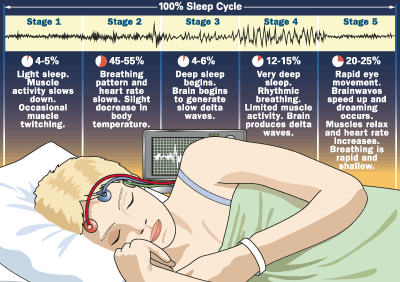SENSATION & PERCEPTION
Sensation
- window into the world
- process by which our sensory receptors and nervous system receive stimulus from the environment
- processing of stimuli
Perception
- interpret what comes into window
- essentially an interpretation and elaboration of sensation
- organizing and interpreting sensory information, enabling us to recognize meaningful objects and events
Visual Capture
- tendency for vision to dominate other senses
Gestalt Psychology
- "means an organized whole"
- these psychologists emphasize our tendency to integrate pieces of info into meaningful wholes
Gestalt Philosophy
- whole is greater than the sum of its parts
Figure - Ground Relationship
- the organization of the visual field into objects (figures) that stand out from their surroundings (ground)
Grouping
- perceptual tendency to organize stimuli into groups that we understand
- Proximity: nearby objects together
- Similarity: similar figures together
- Continuity: continuous patterns together
- Connectedness: uniform & linked figures group together
Depth Perception
- ability to see objects in 3D although images that strike the retina are 2D
- allows us to judge distance
- depth cues that depend on two eyes
- Retinal Disparity: binocular cue for seeing depth
- the closer an object come to you the greater the disparity is between two images
Monocular Cues
- depth cues that depend on one eye
- Interposition: if something is blocking our view, we perceive it as closer
- Relative Size: if we know two objects are similar in size, the one that looks smaller is further away
- Relative Clarity: we assume hazy objects are farther away
- Texture Gradient: the coarser it is, the closer it is
- Relative Height: things higher in our field of vision, look farther away
- Relative Motion: things closer look like the move more quickly
- Linear Perspective: parallel lines seem to converge at a distance
- Light & Shadow: dimmer objects appear farther away because they reflect less light
Phi Phenomenon
- illusion of movement created when two or more adjacent lights blink on and off in succession
Perceptual Consistency
- perceiving objects as unchanging even as illumination and retinal images change
Sensation & Perception
Bottom Up vs. Top Down Processing
- Bottom Up: analysis that begins with the sense receptors and works up to the brain's integration of sensory information
- Top Down: information processing guided by higher - level mental processes, when we construct perceptions drawing on our experience and expectations
Absolute Threshold
- minimum stimulation needed to detect a stimulus 50% of the time
Difference Threshold
- the difference that a person can detect between two stimuli
- aka: Just Noticeable Difference
Weber's Law
- idea that to perceive a difference between two stimuli, they must differ by a constant percentage , not a constant amount.
Signal Detection Theory
- predicts how we detect a stimulus amid other stimuli
- assumes that we do not have an absolute threshold
- we detect stuff based on experience, motivation, and fatigue level.
Subliminal Stimulation
- below one's absolute threshold for conscious awareness
Transduction
- transforming signals into neural impulses
- information goes from the senses to the thalamus, then to various areas of the brain
Sensory Adaptation
- diminished sensitivity as a result of constant stimulation
Selective Attention
- focusing of conscious awareness on a particular stimuli
Cocktail Party Effect
- ability to listen to one voice among many
Pheromones
- chemical messengers that are picked up through our sense of smell
Touch
- receptors located in skin
- Gate Control Theory of Pain: where nervous system blocks or allows pain signals to pass to the brain
Vestibular Sense
- tells where the body is oriented in space
- sense of balance
Kinesthetic Sense
- tells where body parts are
- receptors located in muscles and joints
Vision
Transduction
- conversion of one form of energy to another
Wavelength
- distance from the peak of one light wave to the peak of the next
- distance determines the hue (color) of the light we perceive
- amount of energy in a light wave
- determined by height of a wave
- the higher the wave, the more intense light is
Parallel Processing
- processing of several aspects of a problem simultaneously
Young Helmholtz Trichromatic Theory
- three color theory
- realized that any color can be created by combining the light waves of three colors (primary)
- red, green, and blue
- most color blind people lack cone receptor cells for one or more primary colors
Rods
- facilitate black & white vision
Cones
- facilitate color vision
Opponent Process Theory
- we can't see certain colors together in a combination
Hearing (Audition)
Frequency
- number of complete wavelengths that pass through a point at a given time
- determines pitch of a sound
Amplitude
- how loud the sound is
- the higher the crest of the wave is, the louder the sound is
- measured in decibels
- we hear different pitches because different sound waves trigger activity at different places
- along the cochlea's basilar membrane
Frequency Theory
- we sense pitch by the basilar membrane vibrating at the same rate as the sound
Hearing Loss
- Conduction: caused by damage to the mechanical system of ear
- Sensorineural: damage to cochlea's receptor cells or to auditory nerves
Smell & Taste
Sensory Interaction
- the principle that one's senses many influence another
Papillae
- those bumps on our tongue
- help grip food while chewing
- contain taste buds









